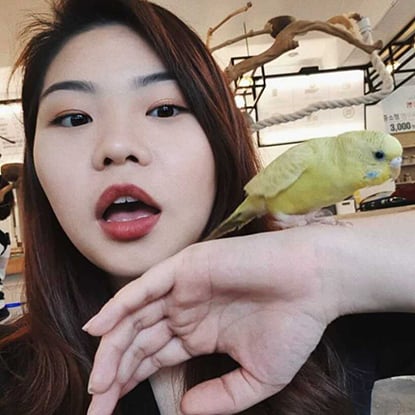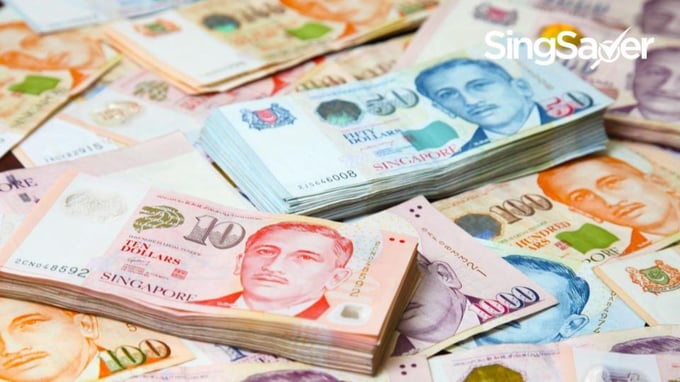What’s in your wallet will totally surprise you.
Dollar bills are one of the most familiar objects in Singapore, with Yusof Ishak's stern face gracing the front. However, while we've carried this currency in our pockets all this time, there are still many things about the Singapore dollar you might not know. From the unique designs to Singapore’s largely forgotten history, our notes (and coins) are actually full of surprises.
Here are 11 things you may not know about the Yusof Ishaks in your wallet.
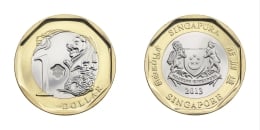
Singapore S$1 coin is in a shape of the Chinese ba gua
If you take a close look at the S$1 coin, you’ll notice that it is hexagon-shaped. According to fengshuibeginner.com, the Singapore one-dollar coin is inscribed with an octagon which looks like the Chinese ba gua.
The ba gua, which literally translates to ‘eight areas’, represents eight symbols commonly used in Taoist cosmology.
Legend has it that the feng shui (Chinese geomancy) masters that Former Prime Minister Lee Kuan Yew had consulted said that the construction of the MRT tunnels would have a negative effect on the country and its people. To circumvent the bad feng shui, they said that every Singaporean household MUST have a ba gua displayed.
Obviously, this was impossible to implement. Therefore, they decided to incorporate the hexagon-shape into the one-dollar coin instead. Now you know.
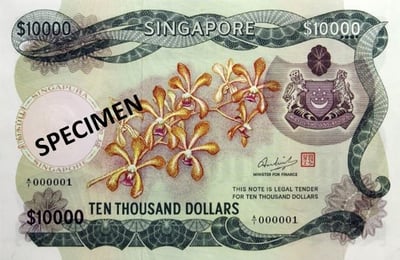
Our S$10,000 note is one of the largest banknotes in the world
Unknown to many, Singapore pioneered banknotes that carried one of the highest value currencies in Asia and the world.
Denominated with a value of S$10,000, the most prominent note of the early Orchard series had a dimension of 203 x 133 mm. To put things in perspective, the latest variant of the S$10,000 note has a dimension of 180 x 90 mm and our S$100 note has a dimension of 170 x 83 mm.
Unfortunately, the Orchard series has concluded its dissemination since 1976 and the current variant has halted its circulation since 2014 to deter money laundering. As such, they are highly sought after by collectors.
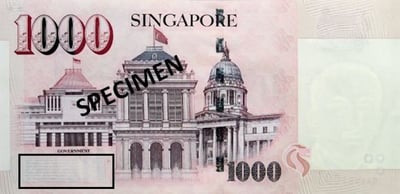
Singapore’s entire national anthem is printed on the back of the S$1000 note
One of the most unique and innovative banknotes produced in Singapore, the S$1000 note of the Portrait series alludes to Singapore's sense of patriotism and duty. To commemorate our sovereignty, the entire national anthem’s lyrics have been inscribed onto the back of the S$1000 note in microtext so as to immortalise Singapore’s independence.
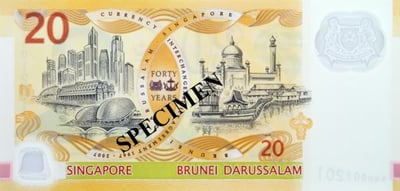
You don’t have to change currency when you go to Brunei
The Currency Interchangeability Agreement, active for over 54 years and counting, authorises the use of Brunei currency in Singapore and Singapore currency in Brunei without the need for monetary conversions. The sole case of such an arrangement in Asia, the agreement is a reminder of Singapore and Brunei Darussalam’s flourishing bilateral relationship.
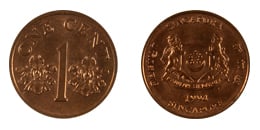
1-cent coins may no longer be in production, but they are still legal tender
The Board of Commissioners of Currency, Singapore (BCCS) stopped minting Singapore’s copper-hued one-cent coins back in 2002. Nevertheless, these coins remain legal tender and up to a limit of 20 coins can be used per transaction.
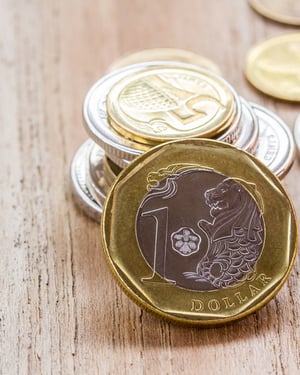
That being said, there’s a limit to the number of coins you can use in a transaction
That’s right, and each transaction caps the number of coins to 20 per denomination. In other words, you can pay up to S$37 worth of coins per transaction. It is time to limit your coin hoarding!

You can exchange damaged notes for new ones at the bank
If you’re worried about your kid defacing your notes or perhaps you’ve dropped your entire wallet into the water, don’t fret. Your dampened/ruined notes can actually be exchanged for new ones at the bank, though at the teller’s discretion.
However, there are a few criteria and corresponding compensatory values subjective to the damages to your notes:
| Portion Remaining | Refund Value |
| At least ⅔ of the note is evident | Full value |
| More than ⅓. but less than ⅔ of the note is evident | Half value |
| ⅓ or less of the note is evident | Zero value |
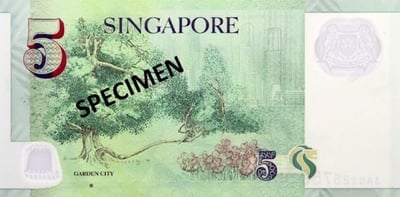
The tree on the S$5 note still exists
If you were to look at the back of your S$5 note, you would notice what it would seem like an ordinary tree. However, there is a greater significance to the imagery for it is a caricature of the venerable Tembusu tree. Located at Singapore Botanic Gardens, the Tembusu tree is part of the flora and fauna that is thriving in this UNESCO world heritage site.

Visually impairment friendly dots on the notes
Every note has a Braille pattern emblazoned in ink at the top right of the front of the note so that the visually impaired can identify the note’s value by touch.
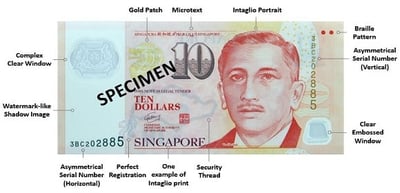
Polymer (plastic) banknotes are not only for water-proofing purposes
Given the simplicity of banknotes, it can be surprising to know that within your polymer dollar note lies multiple layers of materials unavailable commercially. These notes are then infused with security elements that make it remarkably difficult to counterfeit.
Interesting enough, the polymer notes are also dirt-proof and able to withstand high temperatures.
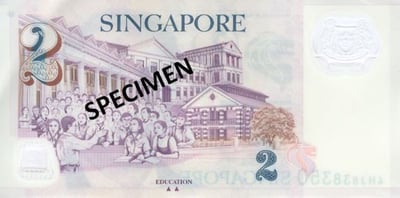
The buildings on the S$2 note are the schools Yusof Ishak used to attend
Representative of our progressive educational pathway — where one goes through primary and secondary school before starting tertiary education — the buildings featured in the S$2 note are Yusof Ishak’s early educational institutions and alma mater. The buildings, starting from the extreme right are Victoria Bridge school, the old Raffles Institution and the College of Medicine.
Similar articles
Coin Deposit Machines in Singapore – Steps to Free Deposits
5 Things You Didn’t Know About Debt Collectors In Singapore
Singapore Deposit Insurance Corporation (SDIC) Explainer: How It Safeguards Our Hard-earned Savings
The S$1.5 Trillion Chasm that Stands Between You and Peace of Mind
CNY Ang Bao Guide 2024: Rates, Etiquette And Everything You Need To Know
100th Birth Anniversary of Mr Lee Kuan Yew Commemorative Coin: LKY100
Where And How To Get New And Fit Bank Notes For CNY 2024
A Guide To Old Singapore Notes: How Much Are They Worth?






